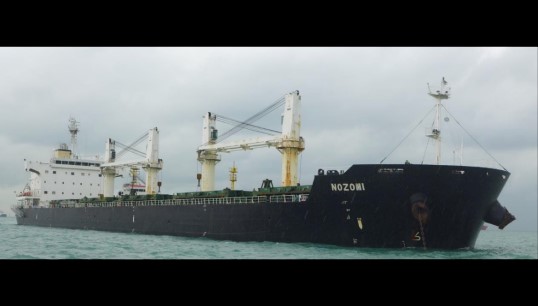
Concerns about the lack of standardised signage to warn seafarers about the dangers of enclosed spaces have been raised in a report on the death of an AB in a cargo hold earlier this year.
The Singapore Transport Safety Investigation Bureau (TSIB) report also reveals confusion among crew members over the use of emergency equipment while trying to rescue their colleague, who died while trying to retrieve a dropped dog handle.
The accident occurred in April this year while the Singapore-flagged bulk carrier Nozomi was at anchor off the coast of Indonesia after loading a 57,000-tonne cargo of coal.
While waiting for a pilot and for paperwork to be completed, four crew members were tasked with greasing the dog handles on the booby hatch to a cargo hold. Three of the seafarers discovered the AB lying on the coal cargo at the bottom of the booby hatch ladder.
The third officer and the chief cook both attempted to rescue the seaman by entering the cargo hold wearing emergency escape breathing devices (EEBDs). Investigators said it was fortunate that these attempts did not result in the two men also becoming victims as a result of using ‘inappropriate’ equipment. Tests carried out three days after the accident showed oxygen levels at well under half the level needed to sustain life.
The TSIB found that the seafarers mistakenly believed EEBDs should be used for all the closed space entry and rescue drills onboard, even though the devices were not listed in the safety management system as rescue equipment for enclosed spaces. Investigators said they could not determine how such a ‘misperception’ had developed when the records showed the AB and the chief cook had participated in at least six enclosed space entry and rescue drills, and the third officer had taken part in four such drills.
The cargo hold booby hatch had an external sign stating ‘Keep closed at sea’ and an internal sign stating ‘Check safety before entry’.
‘While such a reminder can prompt an individual to carry out some checks, it does not highlight the risks associated with enclosed spaces entry,’ the report points out. ‘It is thus desirable that proper signage be placed to warn the crew that the cargo hold should be treated as enclosed space when it has been sealed for some
time.’
Investigators noted that there is no standard signage for enclosed spaces for use on ships, and while a standard is being developed by the International Maritime Organisation, the owners should consider posting, ‘in conspicuous places on the ship’, signage ‘in a manner
that is understandable by all crew to provide a constant reminder of the risks of entering the cargo hold’.
The report concludes that a risk assessment should have been carried out before the ‘impromptu’ work to grease the dog handles as this might have highlighted the ‘worst case scenario’ of having to enter a cargo hold.
Investigators also said they were unable to establish why the rescue attempts had not been carried out by the designated trained emergency squad.
Tags
